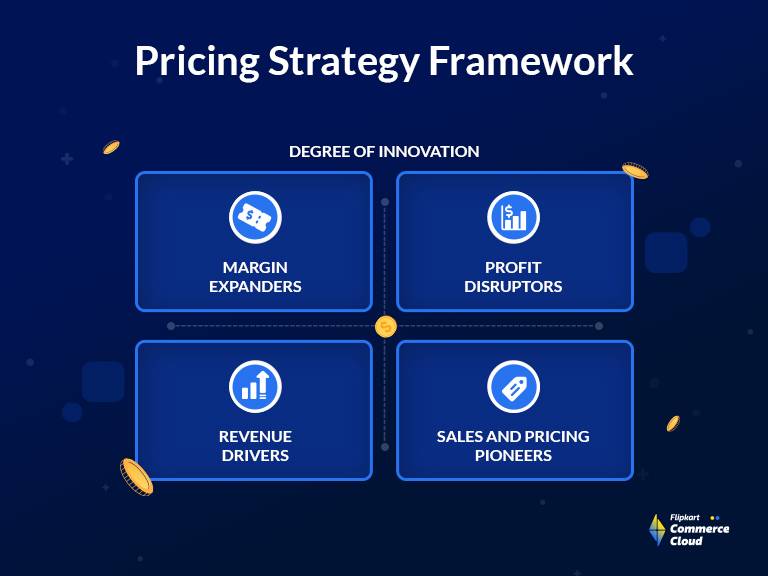Efficient Pricing Strategy for New Products: What You Required to Know

Master Effective Prices Strategies to Make The Most Of Earnings
In the ever-evolving landscape of commerce, understanding effective prices methods is necessary for businesses intending to take full advantage of earnings. A nuanced understanding of prices psychology can substantially influence client behavior and acquiring decisions.
Recognizing Prices Psychology
Understanding rates psychology is crucial for organizations intending to enhance their rates strategies. This area checks out just how customers view costs and just how these assumptions influence their buying choices. Trick ideas in prices psychology consist of the anchoring effect, where the first price provided functions as a referral factor for customers, and the concept of cost sensitivity, which varies amongst different client sectors.
Furthermore, companies can utilize the notion of perceived worth, where the viewed advantages of a service or product can warrant a higher rate point. For example, costs pricing can develop a mood of exclusivity, attracting consumers that link higher prices with remarkable high quality. On the other hand, psychological pricing, such as establishing a cost at $9.99 as opposed to $10, can substantially influence customer habits by making rates appear a lot more eye-catching.
Additionally, shortage and necessity can enhance the viewed value of products, prompting quicker investing in choices. Understanding these mental triggers allows organizations to create pricing strategies that not just drive sales yet also foster customer loyalty. Therefore, understanding rates psychology is crucial for reliable rates strategy formula, resulting in boosted profitability and market positioning.
Carrying Out Value-Based Prices

Next off, segment your consumers based on their willingness to pay and the worth they perceive. By doing so, you can customize offerings and prices techniques to line up with different segments.
After collecting insights, set rates that reflect the maximum amount a client is willing to pay, ensuring that they perceive a reasonable exchange for the value received. Interact the worth suggestion efficiently, highlighting the advantages and differentiators of your offering. Continuously keep an eye on market conditions and customer responses to improve your rates strategy over time. By applying value-based rates, organizations can boost earnings while promoting lasting client commitment.
Exploring Dynamic Prices Versions
In today's swiftly changing market landscape, dynamic pricing versions have actually emerged as an effective approach for businesses seeking to optimize income and respond to changes in need. These models enable companies to adjust their rates in real-time based on various variables such as client behavior, market fads, and stock degrees. By leveraging information analytics and algorithms, businesses can identify optimum rates points that make best use of sales while staying competitive.
Dynamic prices can take different forms, including time-based prices, where costs rise and fall based on time of day or season, and demand-based pricing, which readjusts costs according to current customer demand. This adaptability not only improves success yet also improves consumer satisfaction by using rates that reflect real-time market problems.
Executing vibrant prices requires a durable technical framework and a deep understanding of consumer sections. Transparent interaction about rates adjustments can assist reduce consumer frustration and foster depend on, eventually leading to continual success in a competitive marketplace.
Studying Competitor Rates
Keeping track of competitor prices is vital for services aiming to keep an one-upmanship in their corresponding markets. By examining competitors' pricing methods, business can determine market trends, comprehend customer choices, and readjust their prices accordingly. This evaluation involves celebration data on competitors' rates, promotional approaches, and item offerings to inform prices choices.
To successfully assess rival rates, companies must make use of numerous tools and techniques, such as cost tracking software program, market research records, and consumer feedback. This information can disclose exactly how rivals position their solutions and products, permitting companies to separate their offerings or adopt comparable methods to stay pertinent.
Furthermore, it is essential to classify competitors right into indirect and direct rivals. Straight rivals supply similar items or services, while indirect rivals may meet the exact same client need with different remedies. Recognizing the subtleties between these groups will allow companies to tailor their prices click over here now methods a lot more successfully.
Ultimately, ongoing competitor pricing evaluation is crucial for making informed pricing decisions. It allows organizations to remain agile in reaction to market shifts, ensuring they can confiscate possibilities and alleviate threats connected with prices approaches.
Evaluating Pricing Efficiency
Comprehending just how rival prices influences market characteristics causes a natural concentrate on assessing prices performance within one's own company. This examination is vital for recognizing locations of toughness and opportunities for improvement, ultimately improving success.

Additionally, carrying out normal pricing audits can expose disparities between expected additional reading and actual performance. This entails comparing pricing information throughout different sections and networks to understand differences and recognize fads. Additionally, integrating client feedback can provide understandings right into perceived worth versus real rates, ensuring positioning with market assumptions.
Last but not least, leveraging information analytics devices can facilitate much deeper understandings right into rates efficiency, making it possible for companies to make data-driven modifications (Pricing Strategy). By constantly evaluating prices efficiency, organizations can adjust to market modifications and optimize their approaches, making sure sustained earnings in a competitive landscape
Final Thought
By leveraging rates psychology, organizations official statement can improve perceived worth and tailor pricing to varied customer sectors. The adoption of dynamic and value-based rates designs promotes real-time changes based on demand and consumer readiness to pay.
Recognizing rates psychology is vital for companies intending to maximize their prices techniques. Comprehending these psychological triggers enables services to create prices methods that not just drive sales but also foster client commitment. Hence, understanding prices psychology is crucial for reliable pricing approach formula, leading to improved success and market positioning.
By assessing competitors' prices methods, business can determine market trends, understand consumer choices, and change their pricing appropriately. By leveraging pricing psychology, businesses can enhance perceived value and tailor rates to varied client sectors.